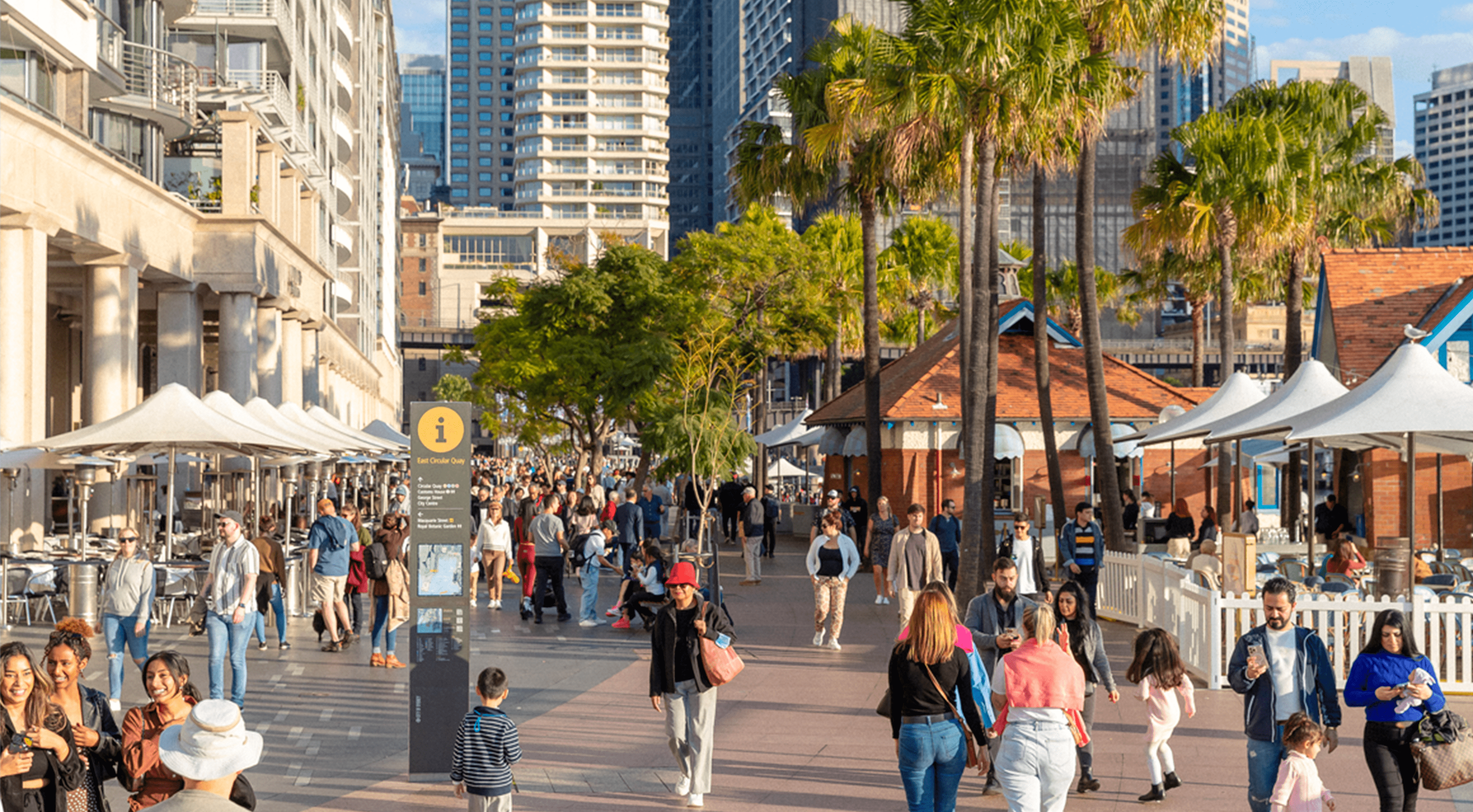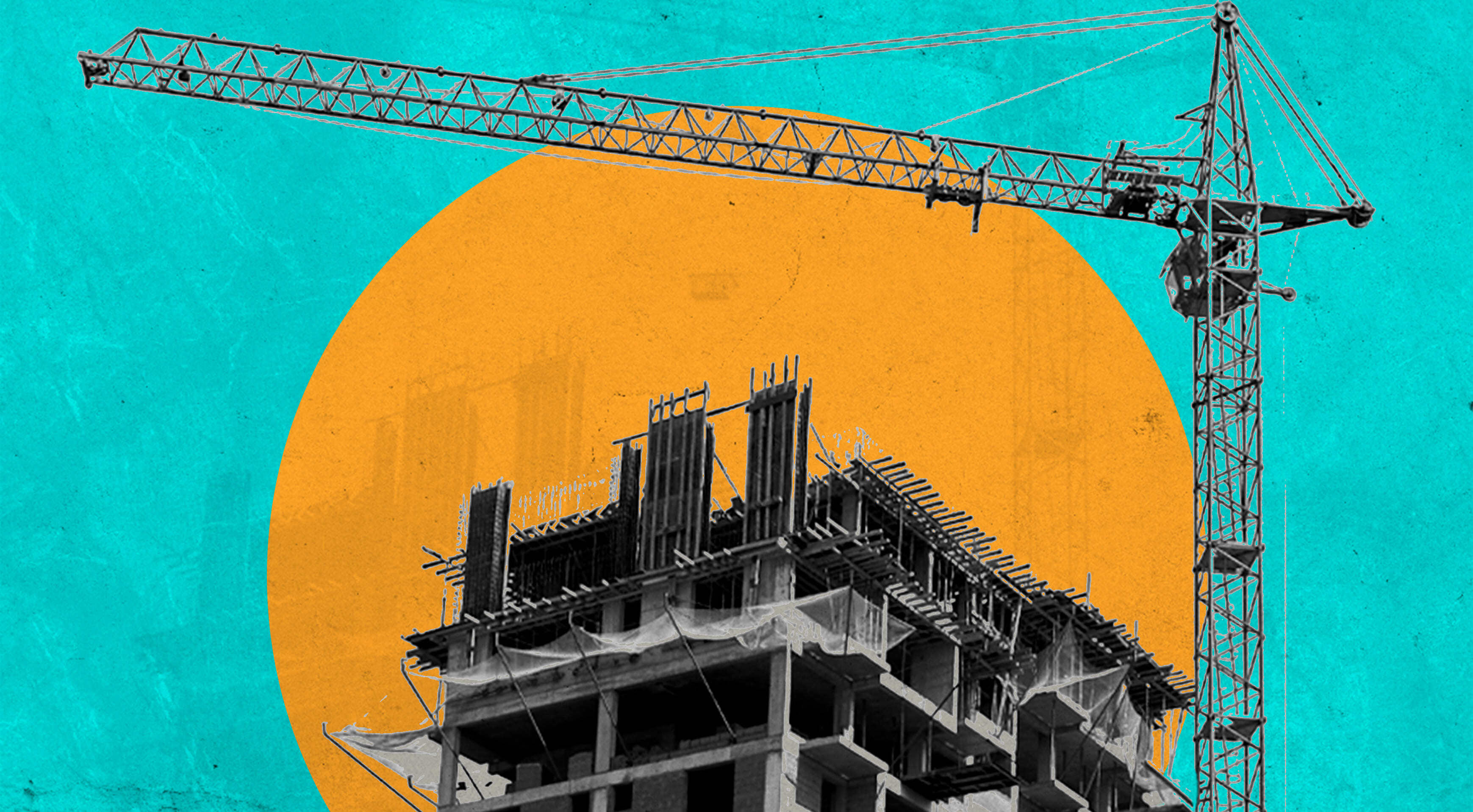Features > Property News & Insights > In-Depth Analyses
Did the RBA just make the housing crisis worse?

Image from Brendon Thorne / Bloomberg via Getty Images
KEY POINTS
- Master Builders Australia has warned that already weak investment in housing will suffer further if high inflation and interest rates don’t begin to decline
- Building approvals have just experienced their worst financial year since 2011-12
- Comments about the possible timing of interest rate cuts by the RBA Governor Michele Bullock are likely to shake investor confidence in housing even further
The building industry has warned that investment in new homes in Australia will continue to suffer if inflation and interest rates don’t begin to decline, worsening the current housing crisis.
The warning from peak industry body Master Builders came after the Board of the Reserve Bank of Australia (RBA) announced that it had decided at its August 2024 meeting to keep the cash rate on hold at 4.35%—a 12-year high.
Master Builders says more needs to be done to increase investor confidence in the construction sector.
However, comments by the RBA Governor Michele Bullock about the timing of any future interest rate cuts are likely to have spooked many potential property investors, particularly large financiers who bankroll high-density apartment projects where profit margins are tight.
The warning from the building industry
Master Builders says the building and construction industry welcomes the news that the RBA decided against lifting interest rates for the 14th time since May 2022, when the central bank began a long campaign to try to snuff out an inflation breakout in Australia.
At a post-rate decision press conference, RBA Governor Michele Bullock revealed the Board had considered raising the cash rate again but decided against it, opting to leave it at 4.35%—where it’s been since November last year.
“The building and construction industry has always been among the hardest hit by interest rate rises,” says Master Builders CEO Denita Wawn.
“Each rise over the last two years has meant a decline in building activity and new home building, prolonging the housing crisis.”
“More needs to be done to bring rates down, reduce inflation, and give buyers the confidence they need to invest their money in new home building,” she says.
“Australians just aren’t going to invest while the economic situation remains uncertain and project costs don’t stack up.”
Master Builders has pointed to recent Australian Bureau of Statistics data that revealed borrowing by owner-occupiers remains very weak.
“The lending data show that Australians are currently reluctant to enter into mortgage commitments – both for new and existing homes,” says Master Builders chief economist Shane Garrett.
Mr Garrett points out that borrowing by investors for both existing and newly built homes has strengthened, now accounting for 46% of all new home construction loans, but indicates more is needed.
“Significant housing investor participation in the market is key to increasing the availability of rental accommodation and putting downward pressure on rental prices.”
Master Builders CEO Denita Wawn says it’s vital more is done to encourage housing investment.
“If we are going to meet the 1.2 million new home target of the National Housing Accord, we need to see more private investment in new home building,” she says.
“The current economic environment is discouraging that investment.”
So, the key here appears to be confidence.
Big and small investors need to have confidence in the economic outlook and confidence that Australia will return to a stable lower interest rate environment in the foreseeable future to ensure that the profitability of housing investments stacks up.
The RBA’s response
However, the message they are getting from the RBA is exactly the opposite.
Every interest rate decision issued by the bank this year has been accompanied by a media release where written in large print are the words “The outlook remains highly uncertain” or “The outlook is still highly uncertain.”
The fact that Australia’s central bank, with one of the largest and smartest economic forecasting teams in the nation, is basically saying, “We don’t know,” is disturbing.
So too, is the seeming contradictory decision by Governor Michele Bullock to chastise money market traders and dampen public expectations by setting out a firm time frame for rate cuts.
You might remember her predecessor Philip Lowe was widely criticised for the “forward guidance” he famously provided on future interest rate settings.
In October 2020, at the height of the COVID-19 pandemic, Mr Lowe ignored internal bank advice to be circumspect and publicly stated that the central bank was not expecting “to be increasing the cash rate for at least three years.”
At the time, Australia's cash rate was at an emergency low of 0.25%.
Later, when rates had been cut even further to just 0.1%, Mr Lowe declared that the bank could not see interest rates rising “until 2024 at the earliest.”
When the bank was forced to start (belatedly) hiking rates in May 2022 after an inflation break-out, Mr. Lowe was forced to make several humiliating public apologies for his ill-advised “forward guidance” and his term as governor was not renewed by Treasurer Jim Chalmers.
However, Michele Bullock doesn’t seem to have learned this lesson.
Although she prefaced her remarks with, “I'm going to obviously preface this by saying no forward guidance…”, she went on to do exactly that, trying to rule out expectations of a rate cut in the next six months.
“Near term, I think what our… the (RBA) Board's feeling is that the market path at the moment is pricing in interest rate reductions by the end of this year.”
“I think the board's feeling is that the near term—by the end of the year and the next six months— that doesn't align, given what the board knows at the moment and given what their forecasts are, that that doesn't align with their thinking about interest rate reductions at the moment.”
Sorry, but this is clear “forward guidance” that the central bank of Australia currently isn’t planning any interest rate cuts in the next six months.
This is despite money market traders—who tend to regard Australia as a cog in a complicated global economy—pricing in nearly two full 0.25% interest cuts over the next six months.
It will be interesting to see how many large housing projects and developments are stalled or don’t even get off the ground in the next few months as a result of the RBA Governor’s comments.
We will also probably never know how many first-home buyers or investors decide not to build a new home because they’ve lost confidence that rates will come down soon following the RBA Governor’s “forward guidance”.
Home approvals have just recorded their lowest level in a financial year since 2011-12, with just 163,000 new dwellings approved in 2023-24.
The industry needs to average construction of around 240,000 homes a year over the next five years to meet the government’s ambitious target of constructing 1.2 million homes by mid-2029.
The simple fact is that with unhelpful public commentary from the likes of the RBA Governor, new housing supply is going to remain in the doldrums for a long time to come, and that’s going to mean higher rents for tenants and more upward price pressure on what homes there are for sale.
Stay Up to Date
with the Latest Australian Property News, Insights & Education.




.png?width=292&height=292&name=Copy%20Link%20(1).png)
 SIGN UP FOR FREE NEWSLETTER
SIGN UP FOR FREE NEWSLETTER
%20(1).png)






.jpg?width=1920&height=1080&name=Warning%2c%20You%20Might%20Be%20Facing%20Higher%20Taxes%20Soon%20(1).jpg)





.png?width=1920&height=1080&name=Rate%20Drops%20Signal%20BIGGEST%20Property%20Boom%20in%20DECADES%20(1).png)

.jpg?width=1920&height=1080&name=Labor%20vs%20Liberal%20These%20Housing%20Policies%20Could%20Change%20the%20Property%20Market%20Forever%20(1).jpg)
.jpg?width=1920&height=1080&name=QLD%20Slashes%20Stamp%20Duty%20Big%20News%20for%20Investors%20%26%20Home%20Buyers%20(1).jpg)
.jpg?width=1920&height=1080&name=Trump%20Just%20Slapped%20Tariffs%20%E2%80%93%20Here%E2%80%99s%20What%20It%20Means%20for%20Australia%20(1).jpg)
.jpg?width=1920&height=1080&name=Federal%20Budget%202025%20More%20Debt%2c%20No%20Housing%20%E2%80%93%20Here%E2%80%99s%20What%20You%20Need%20to%20Know%20(1).jpg)
.jpg?width=1920&height=1080&name=Australias%20Housing%20Crisis%20is%20about%20to%20get%20MUCH%20Worse%20(New%20Data%20Warns).jpg)
%20(1).jpg?width=1920&height=1080&name=Australias%20RENTAL%20CRISIS%20Hits%20ROCK%20BOTTOM!%20(2025%20Update)%20(1).jpg)
%20(1).png?width=1920&height=1080&name=Is%20Adelaide%20Still%20a%20Good%20Property%20Investment%20(2025%20UPDATE)%20(1).png)
.jpg?width=1920&height=1080&name=RBA%20Shocks%20with%20Rate%20Cuts!%20What%E2%80%99s%20Next%20for%20Property%20Investors%20(1).jpg)
%20(1).jpg?width=1920&height=1080&name=I%20Predict%20The%20Feb%20Rate%20Cut%20(My%20Price%20Growth%20Prediction)%20(1).jpg)
.png?width=1920&height=1080&name=Why%20Property%20Prices%20Will%20Rise%20in%202025%20Market%20Predictions%20(1).png)
.jpg?width=1920&height=1080&name=Why%20Investors%20Are%20Choosing%20Apartments%20Over%20Houses%202%20(1).jpg)
.jpg?width=1920&height=1080&name=Why%20Rate%20Cuts%20Will%20Trigger%20A%20Property%20Boom%20(1).jpg)
.jpg?width=1920&height=1080&name=Retire%20On%202Million%20With%20One%20Property%20(Using%20SMSF).jpg)
.jpg?width=1920&height=1080&name=4%20Reasons%20Why%20You%20Should%20Invest%20in%20Melbourne%20Now%20(1).jpg)
%20(1).jpg?width=1920&height=1080&name=Old%20Property%20vs%20New%20Property%20(Facts%20and%20Figures%20Revealed)%20(1).jpg)
%20(1).jpg?width=1920&height=1080&name=Will%20The%20New%20QLD%20Govt%20Create%20a%20Property%20Boom%20or%20Bust%20(My%20Prediction)%20(1).jpg)
%20Scott%20Kuru%20(1).jpg?width=1920&height=1080&name=Inflation%20Hits%20Three-Year%20Low%20(Will%20RBA%20Cut%20Rates%20Soon)%20Scott%20Kuru%20(1).jpg)
.jpg?width=1920&height=1080&name=How%20to%20Buy%20Investment%20Property%20Through%20SMSF_%20The%20Ultimate%20Guide%20(1).jpg)
.jpg?width=1920&height=1080&name=Victoria%20Slashes%20Stamp%20Duty%20Melbourne%20Set%20to%20Boom%20Scott%20Kuru%20(1).jpg)
.png?width=1571&height=861&name=Are%20Foreign%20Buyers%20Really%20Driving%20Up%20Australian%20Property%20Prices%20(1).png)
.jpg?width=1920&height=1080&name=The%20Single%20Factor%20That%20Predicts%20Property%20Growth%20Regions%20(1).jpg)
%20Scott%20Kuru%20(1).jpg?width=1920&height=1080&name=My%20Prediction%20On%20Rates%20%26%20Negative%20Gearing%20(Market%20Crash)%20Scott%20Kuru%20(1).jpg)

-1.png?width=1920&height=1080&name=Major%20Banks%20Cut%20Rates%20Will%20RBA%20Follow%20Suit%20(Sept%20Rate%20Update)-1.png)
%20Scott%20Kuru-1.png?width=1920&height=1080&name=Rate%20Cut%20Coming%20What%20New%20Zealands%20Move%20Means%20for%20Australia%20(Sept%20Prediction)%20Scott%20Kuru-1.png)
%20(1).jpg?width=1920&height=1080&name=Buy%20when%20the%20interest%20rates%20are%20high!%20(Why%20you%20must%20buy%20now!)%20(1).jpg)
.jpg?width=1920&height=1080&name=Carms_Revised%20Taxes%20Due%20Aug%209%20YT%20Thumbnail02%20(1).jpg)
.jpg?width=1920&height=1080&name=Carms_Too%20Little%20Too%20Late%20Aug%207%20YT%20Thumbnail01%20(1).jpg)









.jpg?width=1920&height=1080&name=Carms_Rate%20Drop%20In%20July%20Jun%2010%20YT%20Thumbnail02%20(1).jpg)
.jpg?width=1920&height=1080&name=Carms_Own%20a%20Property%20V6%20Jun%205_YT%20Thumbnail%20(1).jpg)









.png?width=1920&height=1080&name=Artboard%201%20(3).png)






.jpg?width=1920&height=1080&name=YT%20thumbnail%20%20(1).jpg)

